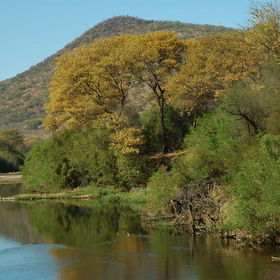
WillemFrost
FollowViews
170
Likes
Awards
Staff Winter Selection 2015
Same photographer See allBehind The Lens
Behind The Lens
Location
I was driving with American guests along the Levubu River in the Pafuri area of Kruger National Park, when I suddenly saw the bird to our left.Time
It was mid-morning, around 10h00.Lighting
It was a relatively clear morning, but the bird was in deep shadows in the riverine bushEquipment
Nikon D2Xs with a Sigma 170-500mm zoom lens. No other equipment was used.Inspiration
This was an opportunistic shot. I was hoping to find leopard or lion or elephant for my American guests, when we suddenly came across this African Harrier-hawk (also known as a "gymnogene"). I knew I had to shoot quickly as he could fly off at any moment. The bird was on the passenger side of the vehicle and I had to lean on my friend Don Moore's shoulder to steady the camera for a shot. There was no time to set a tripod up, or to move a bean bag into position. Nor was there time to waste on composition. I got three shots before he flew away. These birds are not easy to photograph and I knew I had to move quickly to make the best of a rare opportunity.Editing
Photo was taken in RAW and I then used Nikon's Capture NX to adjust "levels and curves". I also applied "unsharp mask" to improve focus.In my camera bag
Other than the camera bodies and lenses, I always have a tripod and/or bean bag with me. UV and polarizing filters are also standard equipment.Feedback
When photographing wildlife, be prepared for the unexpected. You never know in advance what you may see or where the subject may appear. Sometimes you may have hours watching a pride of lions feeding on kill, but sometimes you may have only a few seconds to capture a scene. I use Nikon and normally set the mode dial to "Programme auto", the ISO at 200, the white balance at auto, the exposure compensation at -0,7, image quality NEF / RAW, and the image area FX. This should enable you to shoot quickly when necessary.

























